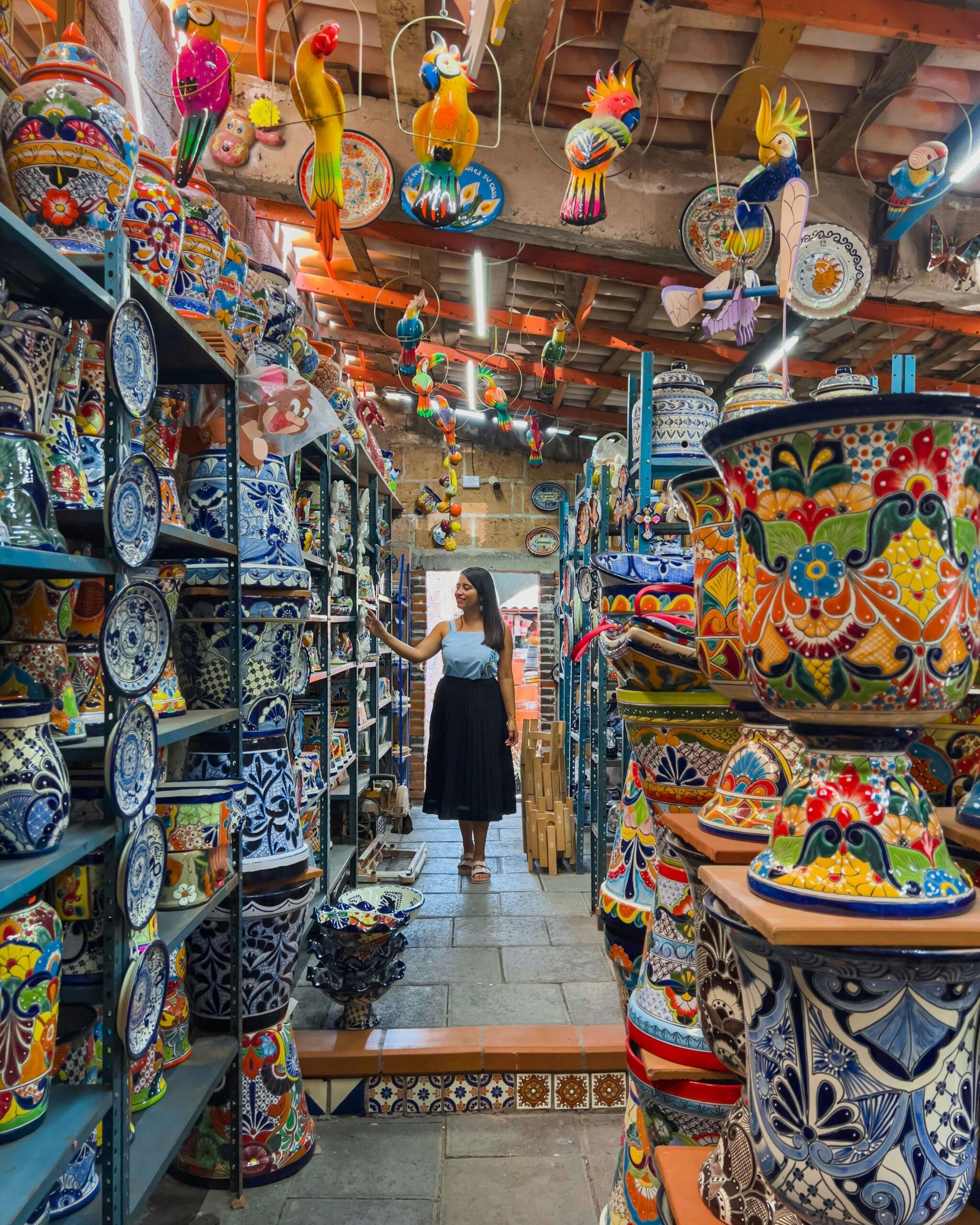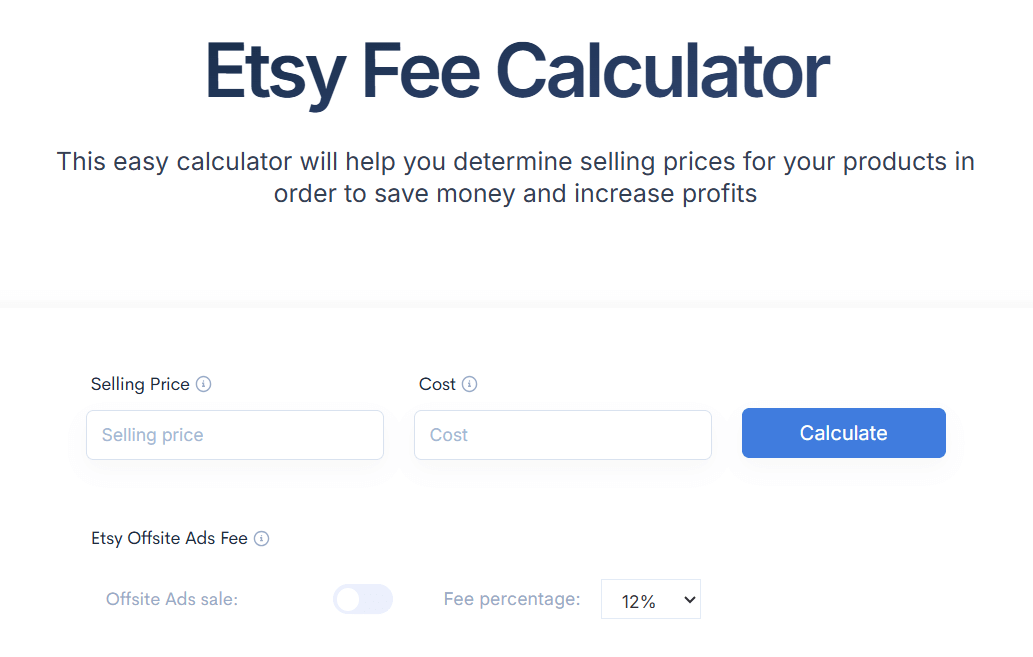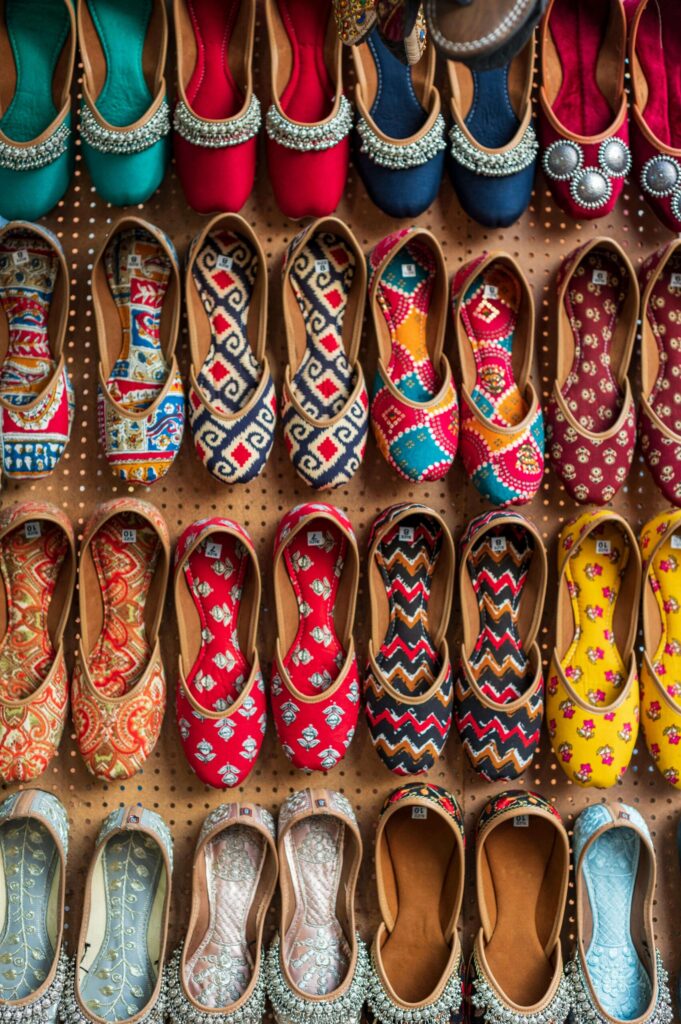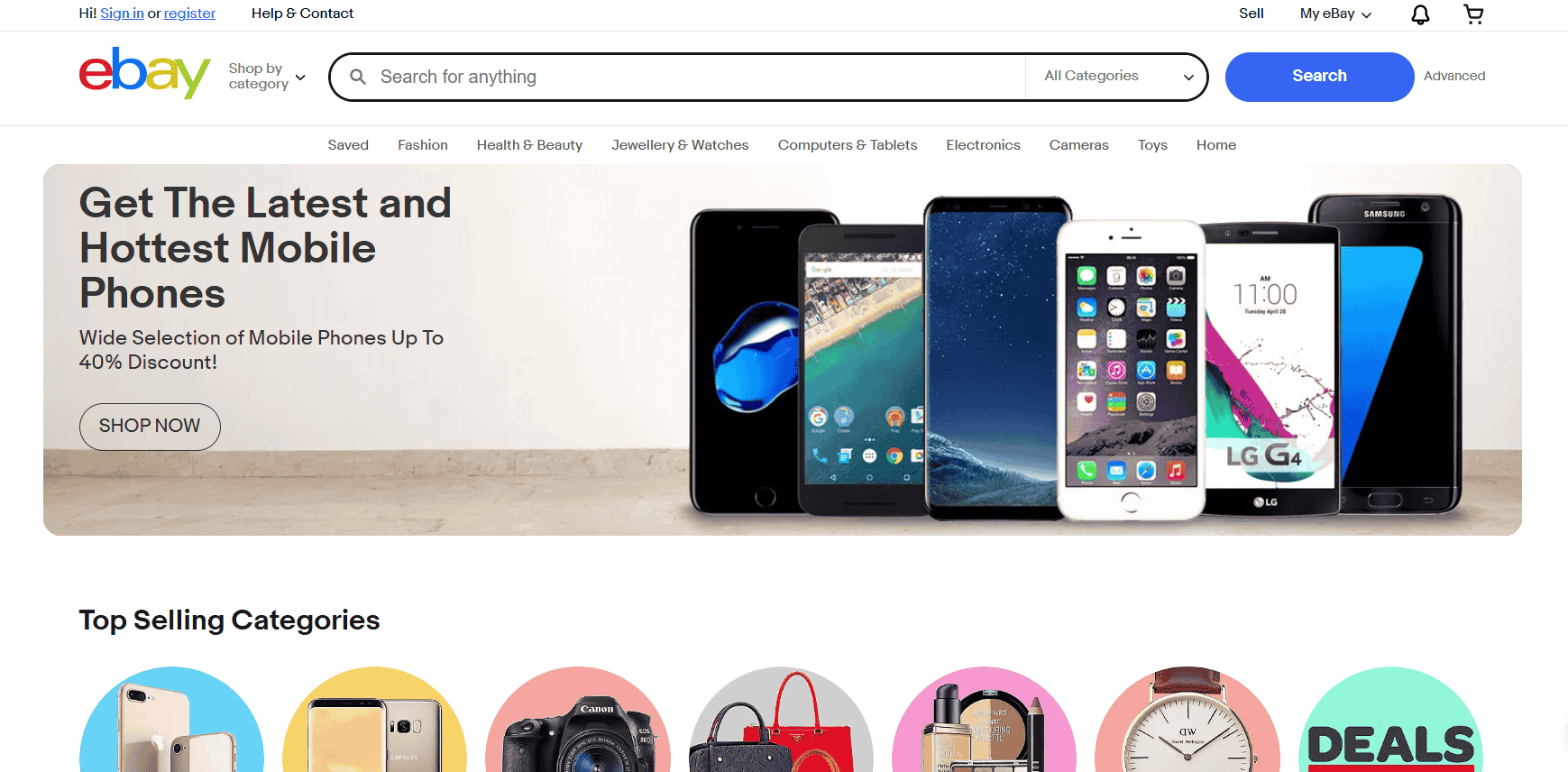Selling handmade crafts online can feel like walking a tightrope. You want to be fair. You want to make a profit. You want customers to see the value of your work. But the part most creators, including you, often wrestle with is pricing your handmade goods the right way.
You pour hours into your designs, picking the right fabric, testing scents for your candles, or choosing color palettes that spark joy. Then you have to assign a dollar value to something you’ve made with your own hands. It’s like pricing a part of yourself.
One moment you’re proud of your hand-stitched journals or polymer clay earrings. The next, you’re second-guessing whether anyone would actually pay $35 for them. You start thinking things like, “What if this is too expensive?” or “Should I lower it to match that other seller?”
I’ve had those moments, too. I’ve stared at my product listing screen longer than I care to admit, adjusting prices up and down, wondering what felt “right.” It took me a while to learn that guessing doesn’t pay the bills, and that confidence in your price comes from clarity in your costs and strategy.
That pricing anxiety is business, and it’s one you can master with the right formula, mindset, and strategy. Once you understand how pricing handmade crafts really works, it changes everything.
You’ll stop selling out and still feeling broke. You’ll stop racing to the bottom and start building something sustainable. You’ll finally be able to charge what your work deserves, and believe it’s worth every cent.
Why Pricing Handmade Crafts Feels So Personal
You’re not selling bulk goods out of a warehouse. You’re selling original handmade items, things you’ve poured time, care, and creative energy into. It’s natural to feel emotionally tied to every product.
That necklace you spent two hours wiring, or that hand-poured soap you tested five different essential oil blends on. More than just inventory, that’s your craftsmanship on display. That’s your skill, your time, your creativity, and honestly, your pride sitting in a digital cart.
But the market doesn’t price emotions.
Buyers scroll fast. They see a product photo, scan a price, and click away or buy in seconds. Most won’t know how long it took to perfect that stitch pattern or how many failed batches it took before you found the right candle scent combo.
They’ll compare your work to someone else’s, often side by side, and decide based on perceived value, not personal effort.
That’s why pricing handmade crafts takes more than just tallying up your costs and slapping on a markup. You’re positioning your work in a crowded, scroll-happy market. Your price tells a story before your listing description ever does. It hints at quality, experience, and confidence, or lack of it.
It’s not about whether someone will pay your price. It’s about what your price says about how much you believe in your work. Undervaluing it over and over again can trap you in a cycle where you’re constantly working, constantly selling, but barely growing. I’ve seen it happen, and I’ve felt it firsthand.
Break Down Every Cost, Or You’ll Lose Money Fast
Before you think about what others are charging or what buyers are willing to pay, you need to understand your actual costs. Guesswork leads to burnout. Clear numbers lead to sustainable growth.
Material Costs
Every scrap counts. That spool of thread you use for stitching, the tiny charm you add to each bracelet, the kraft paper tag you tuck into your packaging? Those aren’t freebies. They’re materials you paid for, and they belong in your pricing.
I used to think certain things weren’t “worth” tracking. A dab of glue here, a single jump ring there. But after a month of steady sales, I realized I was going through supplies faster than expected. The small stuff added up quickly.
Treat your handmade shop like a real business from day one.
Keep a spreadsheet that shows:
- Cost per unit of yarn, clay, beads, wood, wax, etc.
- Average cost per product (not per batch)
- Waste and shrinkage, especially for things like resin, candles, or fabric offcuts
A resin artist I know tracks how many pours she gets from each bottle, down to the milliliter. That’s how tight your numbers need to be if you want your pricing to hold up month after month.
Labor Costs
Your time isn’t free, even if no one’s writing you a paycheck yet. Think of yourself as both the maker and the employee. You’re the person clocking in, crafting the item, and shipping it out.
How long does it take you to make one product from start to finish? That includes cutting, assembling, polishing, even cleaning up your workbench.
Now figure out what your time is worth. A good starting point is $20–$30/hour, depending on your experience and the complexity of your work. You wouldn’t expect a skilled woodworker or illustrator to work for free. You shouldn’t either.
For example, say you make hand-poured soy candles, and it takes you 30 minutes to make one. At $25/hour, your labor cost is $12.50 per candle. That goes directly into your pricing formula.
Overhead Costs
This is where most new handmade sellers fall short, myself included, in the early days. Overhead doesn’t always feel like it ties directly to the product, but it absolutely affects your profit.
Here’s what goes into overhead:
- Etsy fees (listing, transaction, and payment processing)
- Subscriptions to platforms like Shopify, Canva, Adobe, or marketing tools
- Craft fair booth rentals or vendor fees
- Studio rent, utilities, electricity, internet
- Packing materials, thank-you cards, shipping labels
Even if you’re working from your kitchen table, your business is using electricity, internet bandwidth, and storage space. Every time I print a shipping label, I factor that cost in because at scale, it matters.
Once you know your materials, labor, and overhead costs, you have your baseline.
Use the Handmade Pricing Formula That Actually Works
Forget pricing based on feelings or what you “think” people will pay. You need a formula that works whether you’re selling one pair of earrings or a hundred.
Retail Price = (Materials + Labor + Overhead) × 2.5
This pricing formula helps cover your costs, leaves room for profit, and makes sure you’re not spinning your wheels.
Let’s break it down with a real example:
Handmade Beaded Bracelet
- Materials: $3
- Labor: $10 (40 minutes at $15/hour)
- Overhead: $2
- Total Cost = $15
- Retail Price = $15 × 2.5 = $37.50
That’s not random markup. That’s a price that reflects your work and keeps your business profitable.
Some sellers go with a 2× multiplier, especially when starting out or when competing in highly saturated categories. Others use a 3× multiplier for one-of-a-kind, premium, or highly detailed items.
I’ve done both. When I sell on Etsy, I stay closer to 2.5× to stay competitive. On my own website, where I don’t pay listing fees and have full brand control, I can charge more, and people are happy to pay for the added experience.
This formula takes out the guesswork. It helps you build a real business instead of a side hustle that drains your time and barely pays you back.

Research Your Market Without Copying Your Competition
Before you price your handmade crafts, take the time to look around. Go on Etsy, Amazon Handmade, even Instagram Shops, and study what’s out there.
Look at similar items and see what people are actually paying, not just what the listing price says. You want to know what sells, how often, and at what price point. That’s where the real insight is.
Scroll through a few bestseller lists. Check the reviews. Look at the number of sales. A product can sit for months with a low price and still have zero buyers.
Meanwhile, another listing might be double the price and racking up sales daily. That gap has everything to do with how the product is positioned and what kind of customer it attracts.
You’ll notice a few patterns:
- Minimalist jewelry tends to have lower prices but moves in large quantities. Think simple stud earrings or dainty chains, items people buy on impulse.
- Eco-friendly crafts, like beeswax wraps, reusable fabric gift bags, or plant-based skincare, often carry a higher price. Buyers looking for sustainable alternatives are usually willing to pay for that value.
- Products that come with professional branding and thoughtful packaging—custom labels, branded boxes, care instructions—can ask more, because they look and feel like premium items.
I like to compare it to real estate. Two homes can have the same square footage, the same layout, and even be on the same street. But the one with the nice landscaping, new paint, and staged interiors will get better offers. That’s perceived value.
Your handmade crafts are no different. You’re pricing not just a product but the experience people get when they hold it in their hands or give it as a gift.
So take your time when you’re doing your research. Save listings you admire. Study how they describe their products, what kind of photos they use, and what kind of buyer they’re clearly targeting.
Then use that knowledge to position your own product with confidence, not by copying, but by learning what works and adapting it in your own voice.
Platform Pricing Tips: Etsy, Shopify, Craft Fairs
Selling handmade crafts online, or in person, comes with different pricing pressures depending on the platform.
You’re dealing with unique audiences, fee structures, and expectations. A price that works well on Etsy might fall flat at a local craft fair. So your pricing strategy needs to adjust accordingly.
Etsy Pricing Strategy
Etsy makes it easy to reach a massive audience, but that convenience comes at a cost. You’ll be paying $0.20 per listing, a 6.5% transaction fee, and payment processing fees that usually hover around 3% plus $0.25. And that’s before you even consider Etsy Ads, offsite advertising, or free shipping incentives.
To stay profitable:
- Add a 10–15% buffer to your retail price to cover Etsy’s fees
- Fold shipping into your price if you want to offer “free shipping” (Etsy rewards listings that do)
- Use an Etsy fee calculator to see how much of each sale you actually keep
I’ve used one of those calculators before updating my entire product line. It was eye-opening. A candle I thought earned me $8 profit was actually making closer to $3. Once I adjusted for fees, I could finally set pricing that made sense.
Etsy shoppers love deals, but they also value craftsmanship and story. A higher price doesn’t scare them off when your product photography, description, and branding build trust.
Your Own Website (e.g., Shopify)
Selling through your own website means more freedom, and more responsibility. You’ll pay a monthly fee for your platform (like Shopify or Wix), plus payment gateway fees that are typically 2.9% + $0.30 per transaction.
You might also pay for plugins or apps that help with email marketing, reviews, or inventory management.
The upside? You set the rules. You can price your handmade crafts to reflect your brand and value without constantly comparing yourself to the Etsy competition.
Your time isn’t free, even if no one’s writing you a paycheck yet.
When I shifted part of my store to Shopify, I priced items slightly higher. Not because I wanted to gouge customers, but because I wasn’t eating platform fees or competing with twenty lookalike listings right below mine. I noticed buyers on my site spent more per order and returned more often.
Your website should feel like a boutique. Give customers a reason to pay premium prices by offering a polished, smooth experience with clear messaging and beautiful visuals.
Craft Fairs
Craft fair pricing takes a different kind of planning. You’re standing in front of real people, watching them react to your price tags in real time. That’s both thrilling and intimidating.
Some buyers expect discounts because they think they’re skipping the middleman. Others are there for the experience and don’t mind spending a bit more on something special.
The key is to keep pricing simple:
- Round to clean numbers like $20, $25, or $35
- Offer bundle deals like “3 soaps for $50” or “Buy 2, get the 3rd half off”
- Tell quick, meaningful stories: “Made with locally sourced wool,” “Handwoven in small batches,” or “Inspired by Filipino heritage patterns”
One trick that worked well for me at an outdoor market: I printed a small photo of the raw materials beside the finished product. It gave people context and helped justify the price. I didn’t need to explain anything. They saw the process and got it.
Craft fairs are also a great place to test pricing in real time. Watch which price points move, where people hesitate, and which items they pick up but put back down. You’ll learn a lot about your customers. No analytics dashboard needed.
Factor in Profit Margin Like a Real Business
Many handmade sellers get this part tangled. You calculate your material costs, your labor, your overhead, and once all that’s covered, you feel like you’ve made your money back.
But that’s not the same as making a profit. Your labor is your wage. It’s what you’d earn if you were paying someone else to do the work. Profit is what your business earns after that.
That profit is what keeps your handmade business alive. It’s what you use to grow.
Let’s say you’re making ceramic mugs. You’ve priced one at $50. Your material, labor, and overhead total $25. That extra $25? That’s not extra pocket money.
That’s the business margin. That’s where you pull from when you need to buy a new kiln shelf, restock your glaze, or offer free shipping during the holidays.
Without a strong profit margin, you’re always playing catch-up.
You’ll need that buffer for:
- Investing in better packaging or branded labels
- Covering returns, lost packages, or refund requests
- Testing new products or adding seasonal variations
- Running ads, offering bundle deals, or doing giveaways
According to Shopify’s profit margin benchmarks, handmade sellers typically aim for a 40–60% margin. On a $50 product, that’s $20–$30 in profit after covering all other costs. That gives you real breathing room to manage the ups and downs of running a small business.
I used to price my items so that I was only making around 20% margin. It felt fine while orders were slow. But once I had steady sales, I realized I had no room to scale, no money to experiment, and every setback felt like a crisis.
Once I reworked my pricing and locked in a consistent margin, everything shifted. I could finally plan for growth instead of just surviving.
Treat your handmade shop like a real business from day one. Your future self will thank you.

How to Use Psychological Pricing (Without Manipulating Anyone)
Pricing handmade crafts isn’t just about numbers. It’s about how those numbers feel to buyers. People make emotional decisions first and logical ones later. A small change in how you price an item can shift how someone perceives its value, even if nothing else changes.
Let’s talk charm pricing. That’s the classic $19.99 instead of $20. It might seem silly, but research shows people tend to round down mentally. $19.99 looks like a better deal, even though it’s just one cent less.
It works especially well for impulse buys, things like handmade soap, stickers, or jewelry under $50. I’ve tested this myself with art prints. The ones priced at $14.99 sold faster than the exact same prints listed at $15, even though the difference was negligible. It’s how our brains work.
Then there’s price anchoring. This is when you list a higher-priced version of your product next to your regular one. Suddenly, your mid-range item looks more affordable, even if the price didn’t change.
Say you’re selling a handmade leather wallet for $40. Add a premium version with hand-painted detailing for $60. People who were on the fence now feel better about buying the $40 version. It looks like a smart buy in comparison.
Tiered pricing is another powerful tool. Offering a basic, standard, and deluxe option helps people self-select. It shows range and creates a sense of choice. Let’s say you make custom journals. You could offer:
- A basic journal with a soft cover and standard pages
- A mid-tier one with thicker paper and a hand-stamped design
- A deluxe version with a leather cover, ribbon bookmark, and personalization
This doesn’t just boost your average order value. It shows buyers that you’ve thought through different needs and budgets. Some will gladly pay more for upgrades because they feel in control of the decision.
These aren’t gimmicks. They’re tools that help you communicate value clearly. Buyers want to feel confident and excited about their purchase. Your job is to make that path easier.
When your pricing makes sense to the customer and feels right to you, selling becomes smoother and more sustainable.
Should You Ever Run Sales or Offer Discounts?
Yes, but with purpose.
Sales can work really well when they’re intentional. You’re not slashing prices because you’re panicking or trying to keep up with competitors.
You’re doing it because you have a clear reason: maybe you’re launching a new product line, clearing out seasonal inventory, or trying to stir up interest during a slow stretch.
Strategic discounts make sense during big seasonal events. Think Mother’s Day, Black Friday, or Valentine’s weekend. These are times when people are actively looking to buy.
A limited-time deal gives them a reason to act now instead of saving your listing and forgetting it. That sense of urgency can give your traffic a serious lift.
New product launches are another great moment to introduce a discount. A small launch promo can encourage first-time buyers to give your item a shot, especially when you’re building reviews and social proof.
I’ve done this with custom mini sketchbooks. I offered early-bird pricing to my email list and had ten orders come in within 48 hours. That was more than I’d sold the previous two weeks combined.
You don’t always have to cut prices to offer something valuable. You can:
- Build bundles, like “Buy 2, Get 1 Half Off”
- Offer free shipping for orders over a certain amount
- Create exclusive discount codes for your email subscribers or returning customers
The right people won’t flinch at fair pricing. They’ll respect it.
These approaches feel more thoughtful. They reward loyal buyers, attract bigger cart sizes, and keep your brand value intact.
One of my favorite wins came from bundling. I created a “3-for-$45” deal on my hand-poured wax melts. Individually, they were $18 each, so this offer felt like a solid bargain to customers.
The orders came in faster than usual, and my profit margin stayed healthy. I didn’t have to sell more to earn more. I just gave people a smarter way to buy.
Running a sale shouldn’t feel like you’re losing money. When done right, it creates momentum. It helps you test new ideas, reward your audience, and make space for what’s next.
How to Raise Your Prices Without Losing Loyal Customers
A sold-out shop might feel exciting, but it could be a sign you’re underpricing.
Selling out often means demand has outpaced your capacity, or you’re leaving money on the table.
It feels good in the moment, but when your inbox is full of “When will this be restocked?” and you’re still barely covering your bills, it’s time to re-evaluate. Your handmade crafts shouldn’t leave you exhausted and underpaid.
Raising prices doesn’t have to scare people off. What matters is how you do it.
Start small. Bump things up in stages instead of making a huge jump overnight. A $2 or $5 increase feels reasonable and gives you room to breathe.
I’ve done this with handmade art prints and custom notebooks. The first time I raised my prices, I was nervous. But the orders kept coming in, and I stopped resenting the amount of time each product took to make.
Announce the price increase in advance, especially if you have loyal buyers or an email list. Give them a heads-up like, “Materials have gone up and I’ve made a few quality upgrades, so prices will adjust on [date].”
This builds trust and gives them a chance to buy now, which can actually boost sales right before the change.
Make sure your customers see the added value. Show the upgraded packaging, talk about the better-quality thread you’re using, or explain how each product now includes a handwritten thank-you note.
The more you can highlight the improvements, the easier it is for customers to understand the new price point.
Even Target raises prices. So can you. And the people who truly value your work—the ones who love your process, your story, and your attention to detail… won’t flinch. They might even cheer you on.
Tools That Make Pricing Handmade Items Easier
Pricing handmade items can feel overwhelming, especially when numbers aren’t your thing. You’re juggling materials, time, overhead, platform fees, and taxes. It’s a lot to keep straight in your head. Good news is, there are tools that can do the heavy lifting for you.
Craftybase
This is a full-blown inventory and pricing tool built specifically for handmade sellers. It tracks your materials, calculates your cost per item, and even shows you how profitable each product is.
I know sellers who swear by it because it saves them hours every week and helps them make confident pricing decisions based on real data.

Etsy Fee Calculator
Before you publish a listing, plug your numbers into one of these calculators. It’ll show you how much you’ll actually earn after Etsy’s listing fee, transaction fee, and payment processing fee.
You might be surprised by how quickly those charges add up. Using a calculator keeps you from guessing and helps you price your handmade crafts with a real margin in mind.
Profit Margin Calculator
Shopify has a free online tool where you can input your cost, desired markup, and see what your retail price should be to hit your target profit. It’s super helpful when you’re trying to figure out pricing for a new product line or adjust for rising supply costs.
Google Sheets
This one’s my go-to. It’s free, customizable, and easy to learn. I built my own craft pricing spreadsheet that includes columns for materials, labor, overhead, and suggested retail price.
Once you create a template, you can duplicate it for every product. It’s like having your own pricing dashboard without the monthly subscription.
These tools remove the guesswork. You don’t need to be an accountant. You just need to track consistently.
Once you plug in your numbers and see how it all connects, pricing becomes a lot less stressful. You start making decisions based on facts, not fear. And that’s when your handmade business starts to feel solid.
Don’t Be Scared. Price Right. Price Proudly.
Underpricing your handmade crafts isn’t humble. It’s unsustainable. You’re putting your skill, time, and creative energy into every single product.
You’re sourcing materials, testing designs, perfecting finishes, packaging with care, and handling every detail yourself. That’s real value. And your pricing should make room for all of it.
Every time you ship out a handmade item, you’re sending a piece of your story. Maybe it’s a hand-stitched wallet made from locally sourced leather, or a custom watercolor piece that took you five hours and three drafts to finish.
Whatever it is, it carries your imprint. You’ve poured in effort that can’t be mass-produced. That deserves to be rewarded, not squeezed into a bargain bin pricing strategy.
People make emotional decisions first and logical ones later.
You don’t need to match the cheapest option on Etsy. Competing on price alone traps you in a race that has no finish line, only burnout. What you really want is to match your pricing with the value of your work and attract the kind of customer who sees and appreciates that.
In my experience, the ones who keep coming back, the ones who tag you on Instagram, leave thoughtful reviews, and email you about how your work made their day, aren’t scanning for discounts.
They’re drawn to the story behind your product, the craftsmanship they can feel in their hands, and the little details that set your brand apart. They’re not trying to save two dollars. They’re trying to find something that means something.
Price your handmade crafts to meet those customers. The right people won’t flinch at fair pricing. They’ll respect it. And more importantly, you’ll feel good about every sale you make because it reflects the real worth of your work.
That’s how you build a handmade business that lasts. One that supports your creativity, respects your time, and lets you grow with confidence.








Really well-structured and easy to follow.